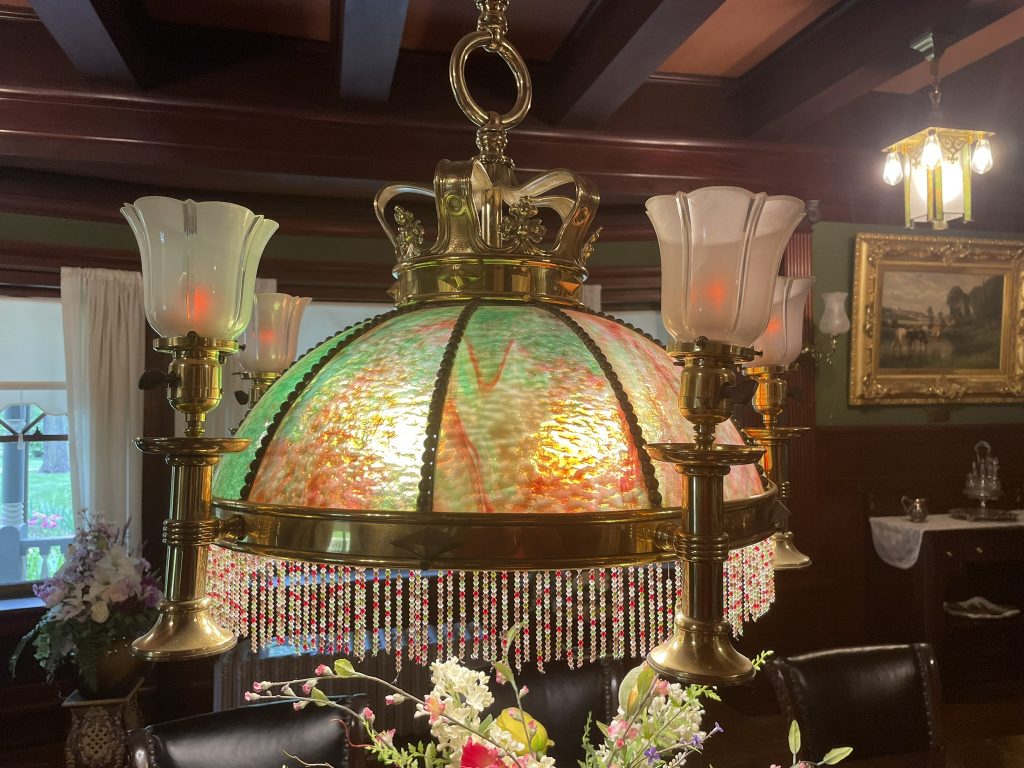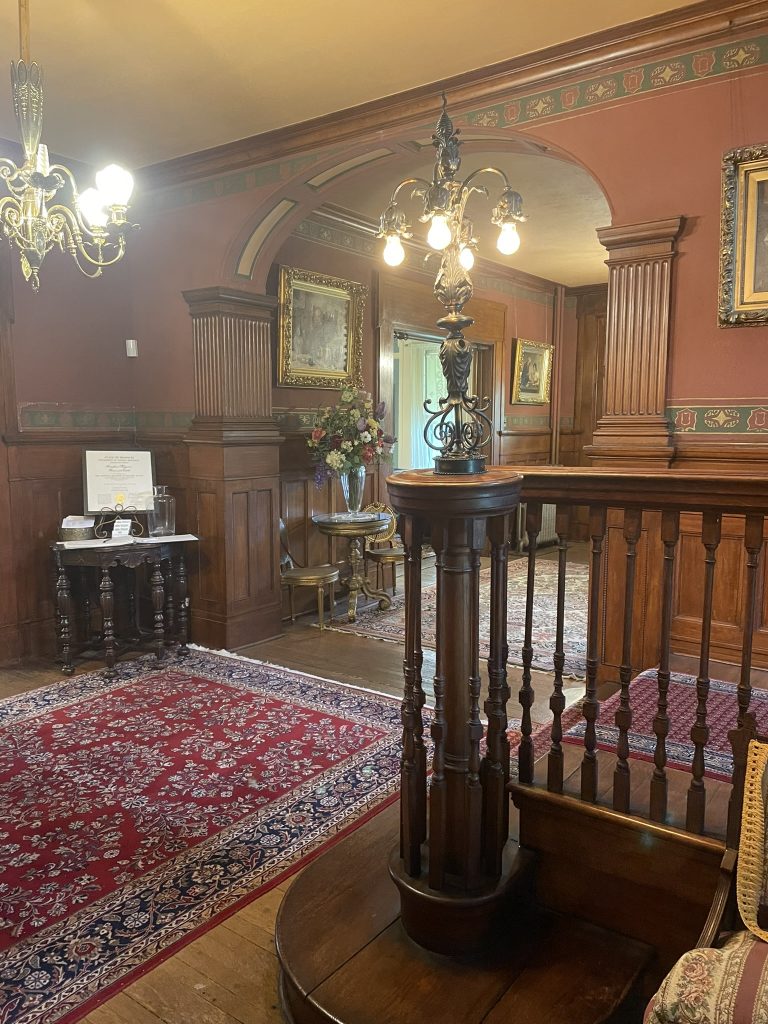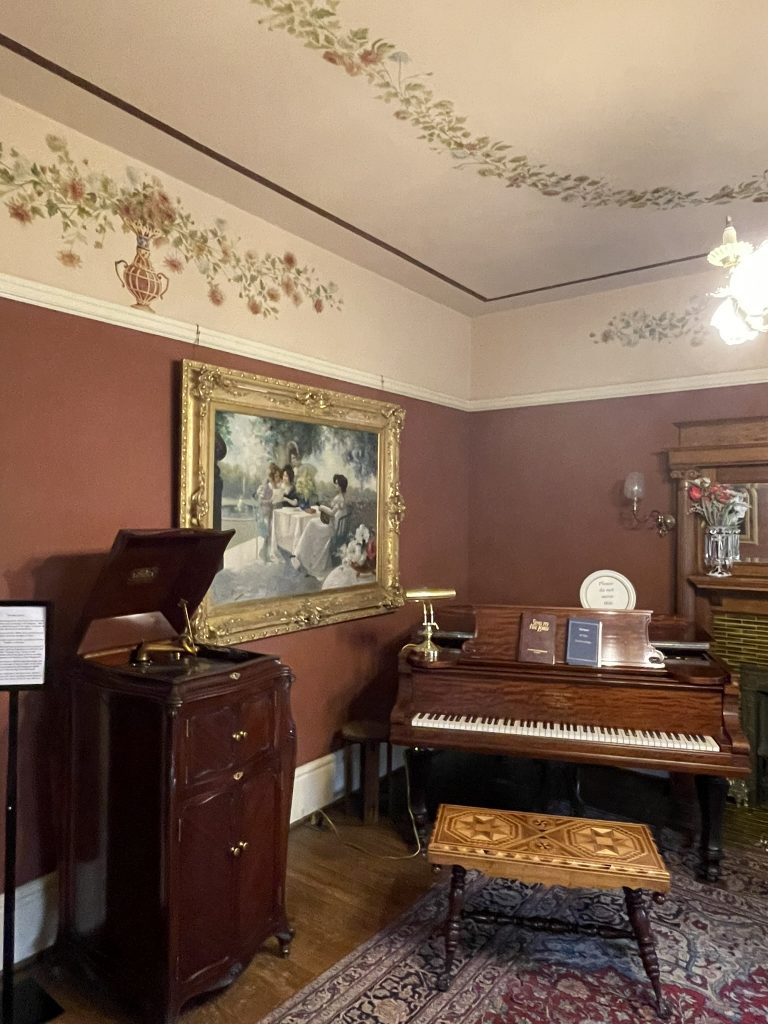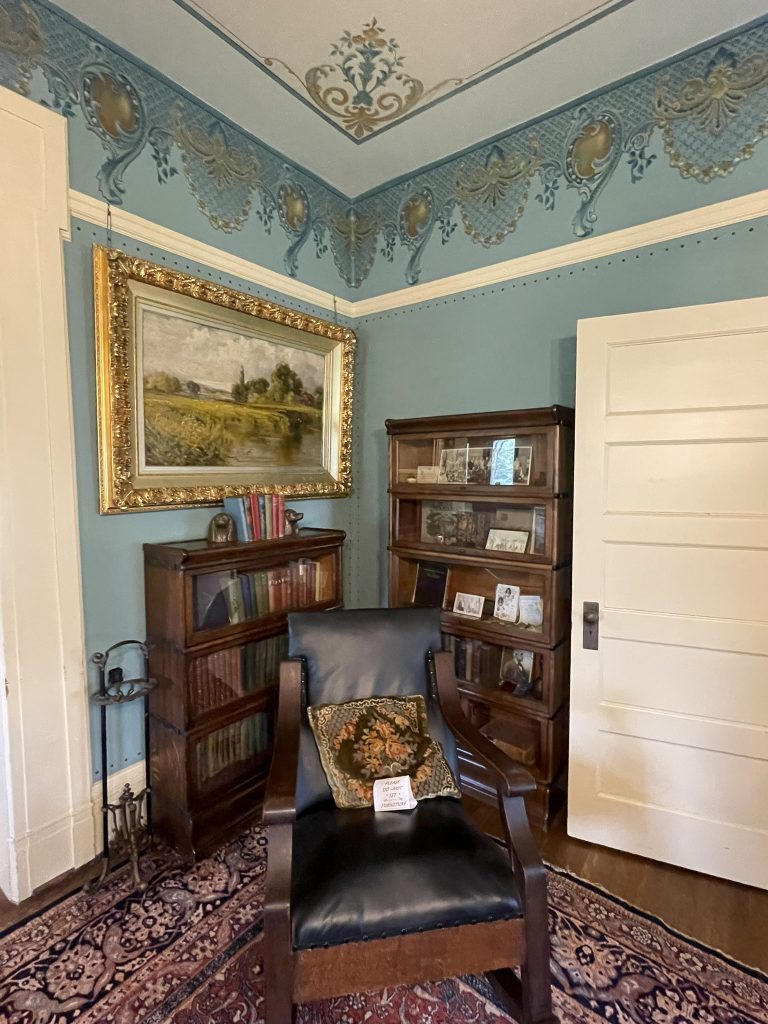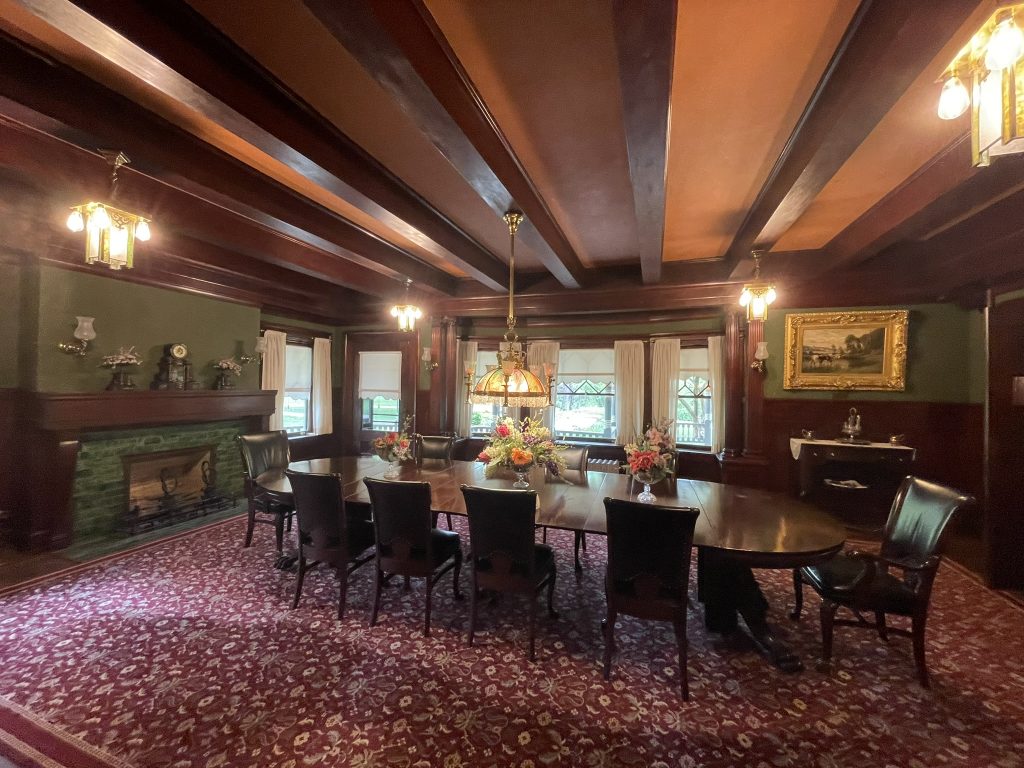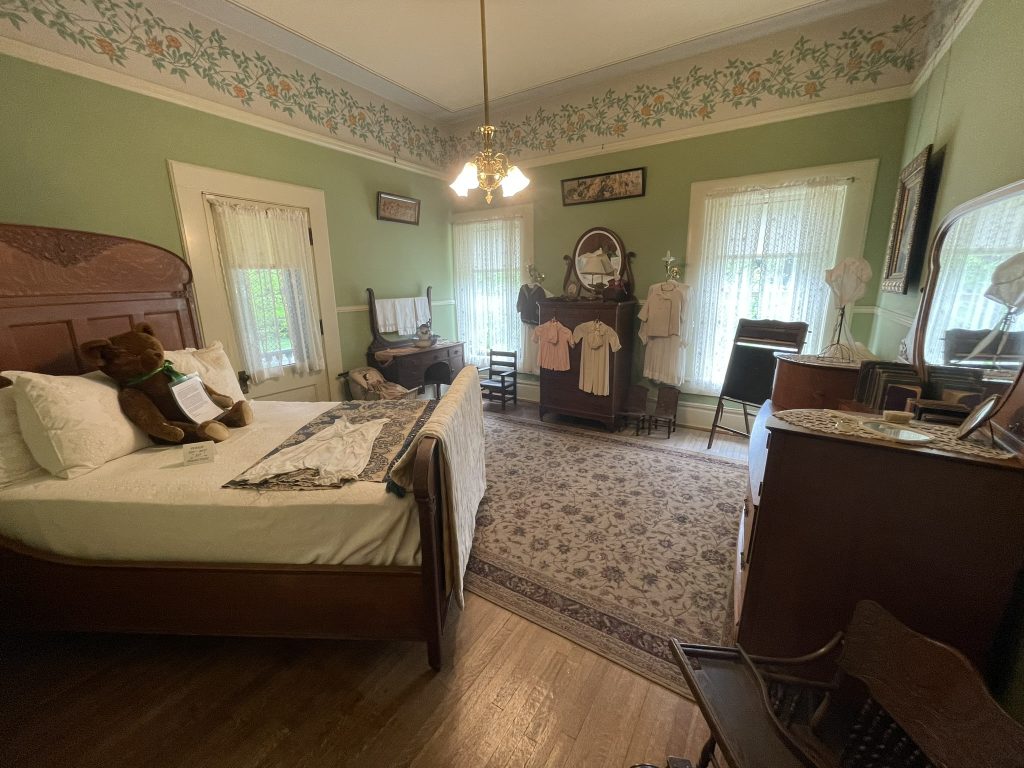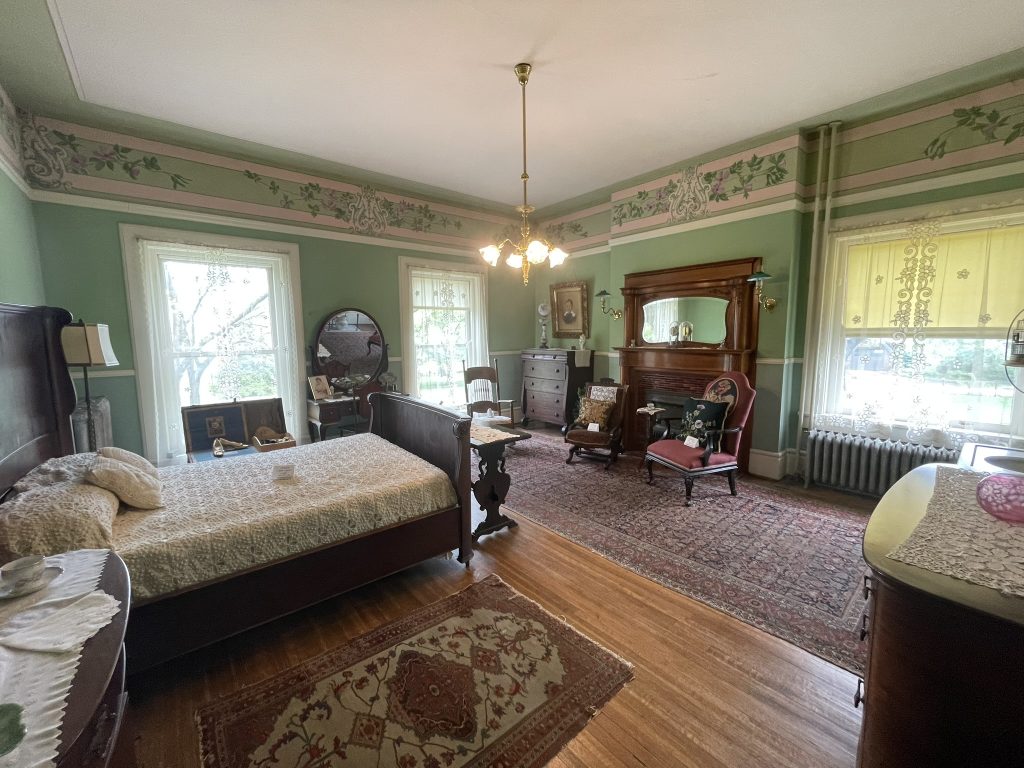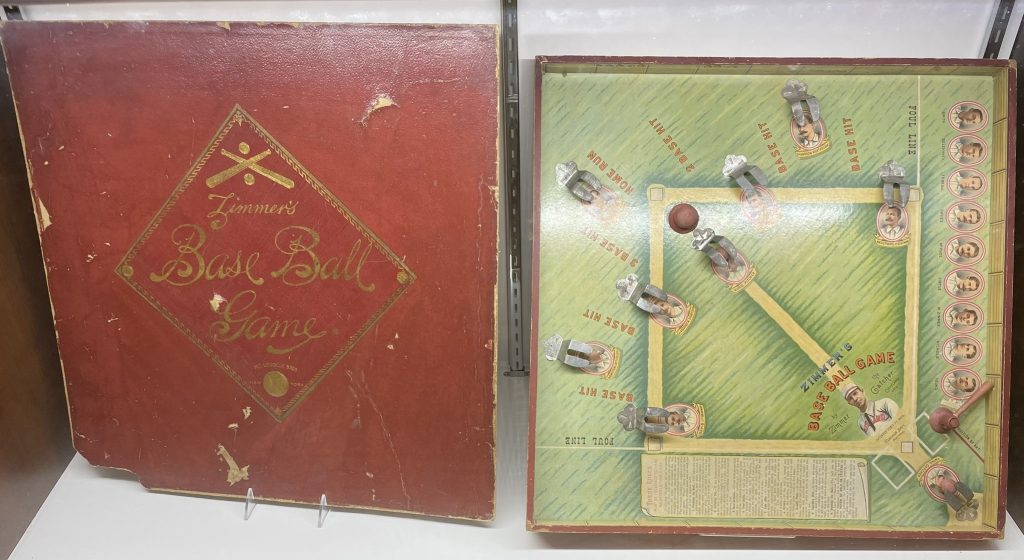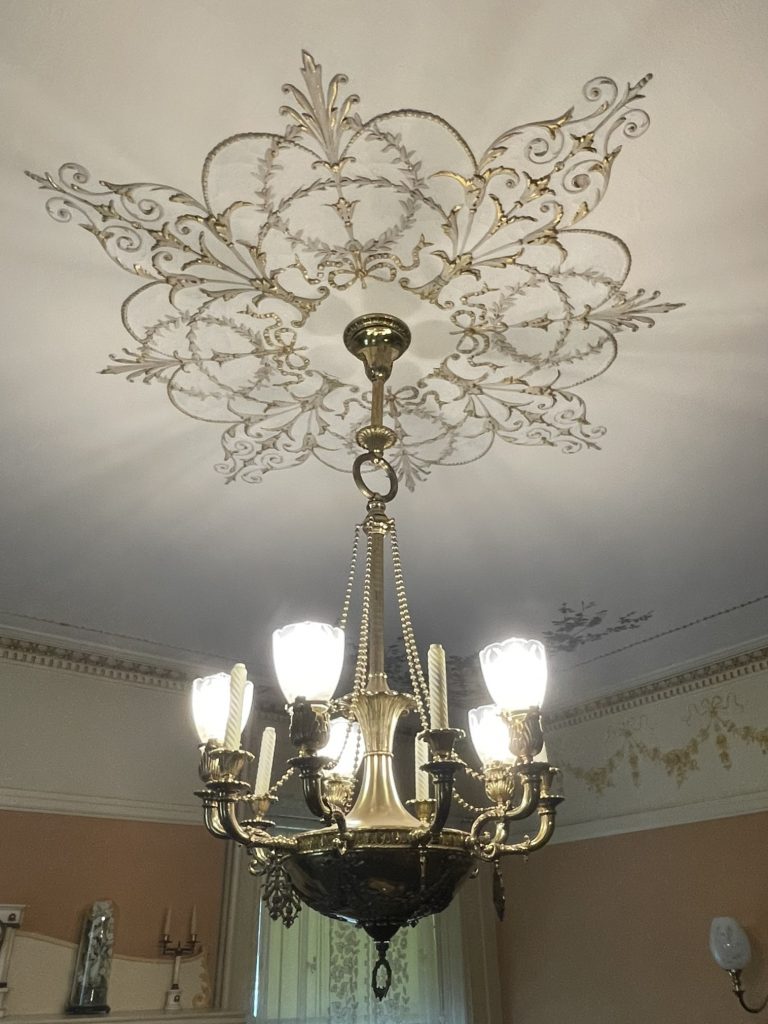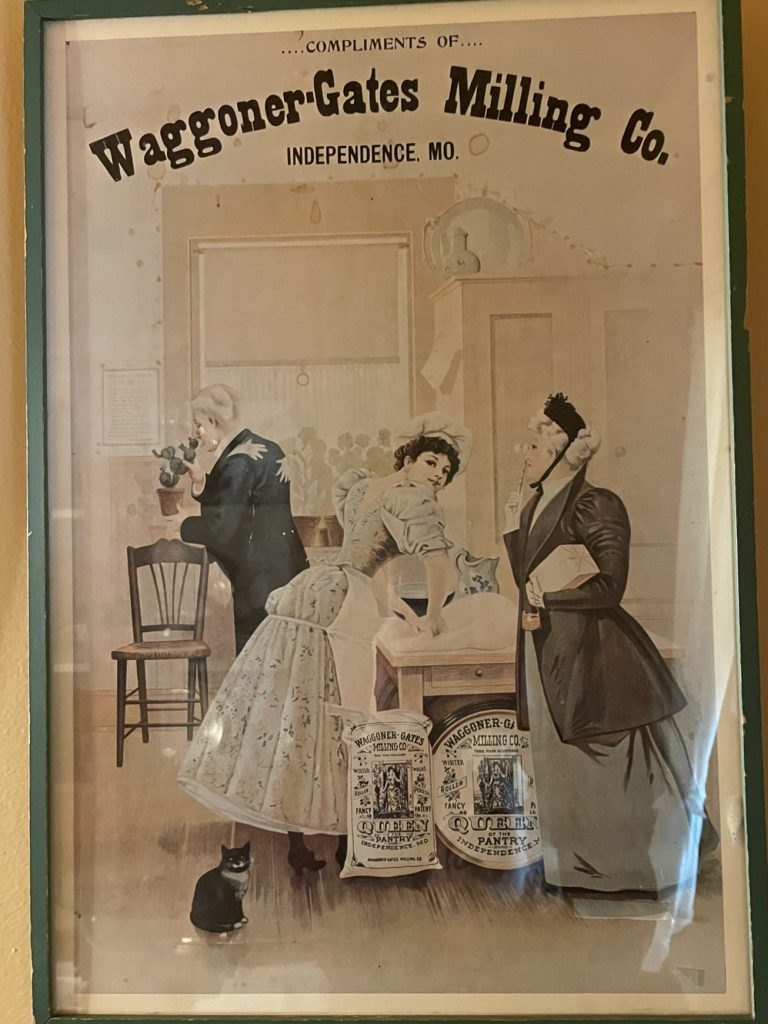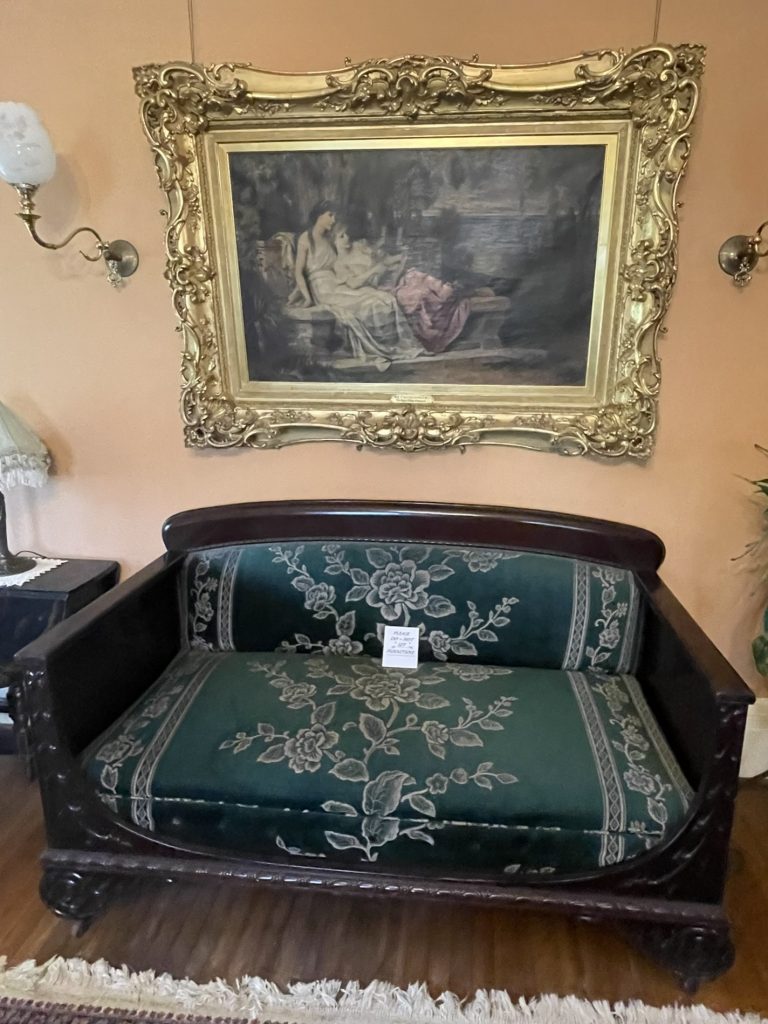I was on the fence about visiting the Bingham-Waggoner Estate because I’m trying to be more selective about visiting historic houses. But while on a tour of the Independence courthouse (which we were visiting as part of our President Truman experience), we were granted access to a gallery of George Caleb Bingham paintings, which tipped us over into visiting (you can see some of those paintings on this linked post).
The Independence, Missouri home dates from 1827, and had a prime location on what later became known as the Santa Fe Trail (supposedly today you can still see the ruts, but we couldn’t find them). The home had many owners over the years, many catering to travelers on the trail.
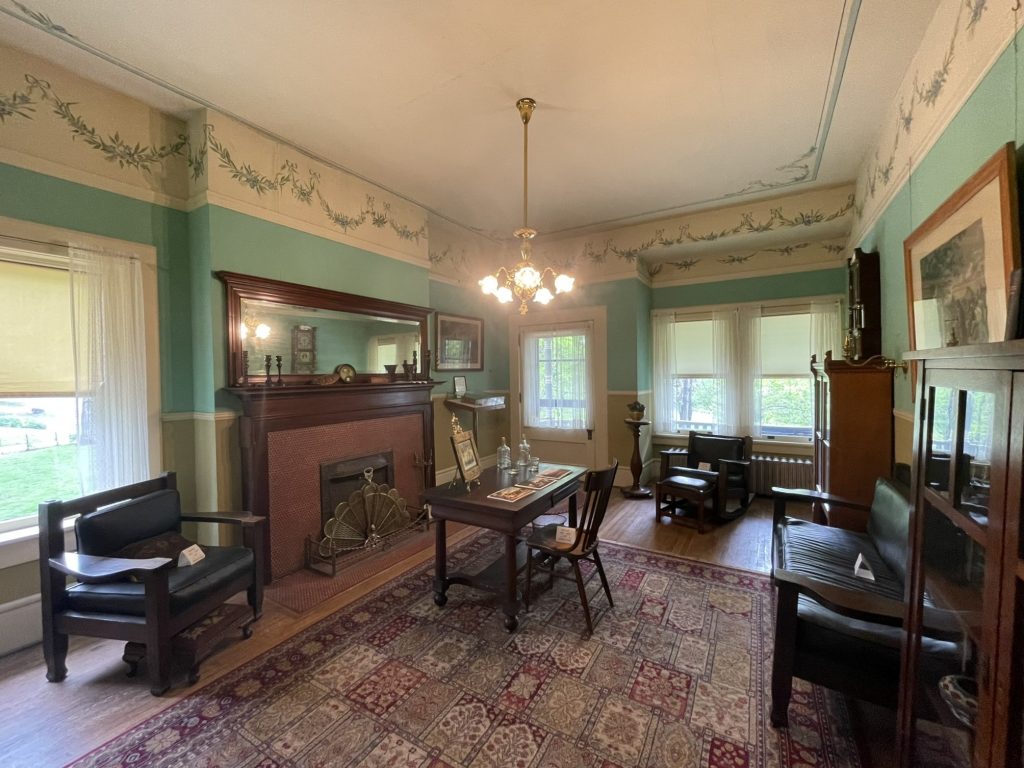
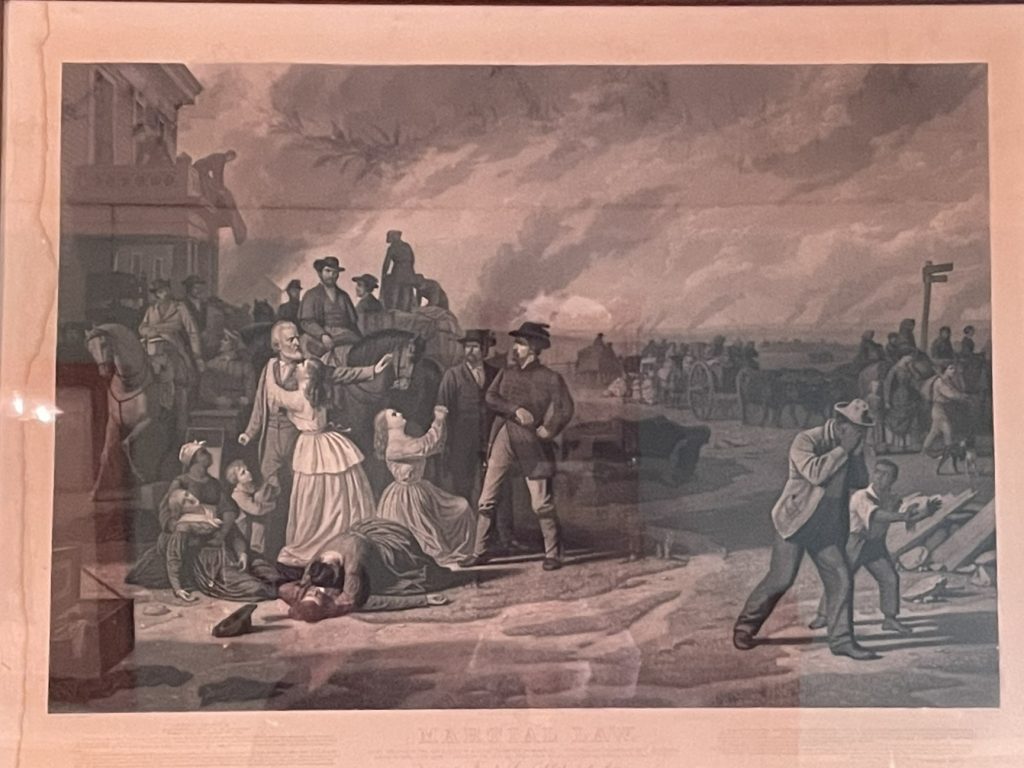
Probably the most famous resident was Bingham (1811-1879), who purchased the home in 1864. Bingham was a famous (at least then, if not so much now) artist and Missouri politician. He had a studio on the property (which has since been torn down), in which he painted his most famous work Order Number 11 (also known as Martial Law).
The 1868 painting was in response to a Union military proclamation of the same name. It required nearly all residents of several counties to vacate within 15 days. Though Bingham was firmly on the Union side, he vehemently disagreed with the order, and did his best to get it rescinded. The painting and his efforts led to claims of Confederate sympathies.
Bingham sold the home in 1870. The Waggoner family purchased the home in 1879. Their claim to fame was their flour mill, which was marketed as “Queen of the Pantry Flour.” It was considered the very best in baking and cake flours.
The Waggoner family occupied the home for almost 100 years, making many changes over the years (such as adding 20 additional rooms). They ended their run in 1976, and in 1979 the home and 19.5 acres it sat on were converted to a museum and park. As a historic house, it could best be described as “fine.” The furnishings and decorations were not anything I’d recommend going out of the way for.
